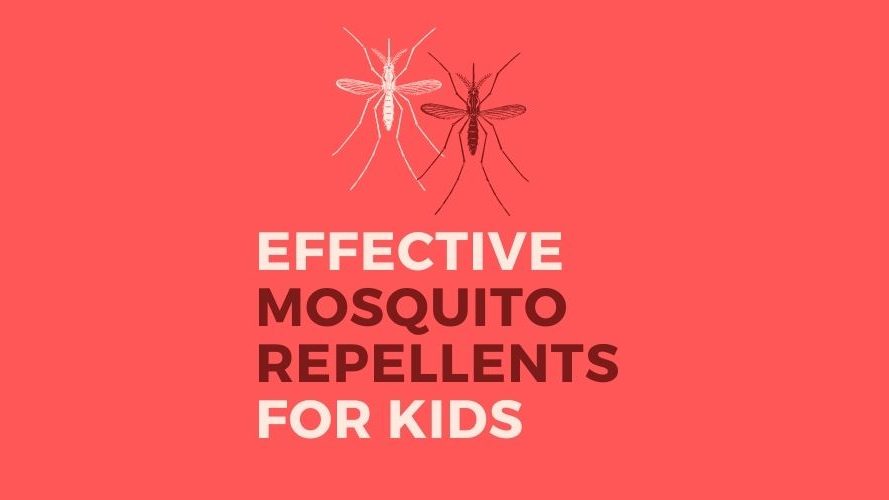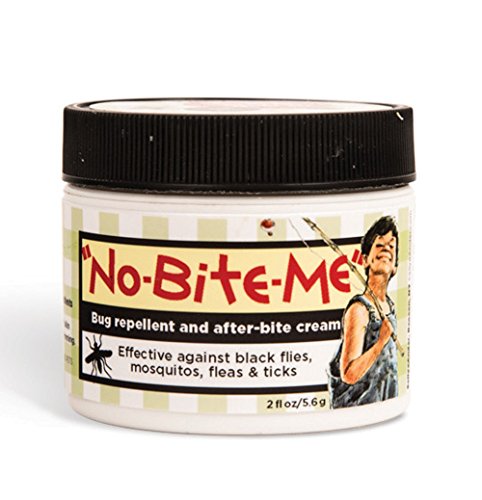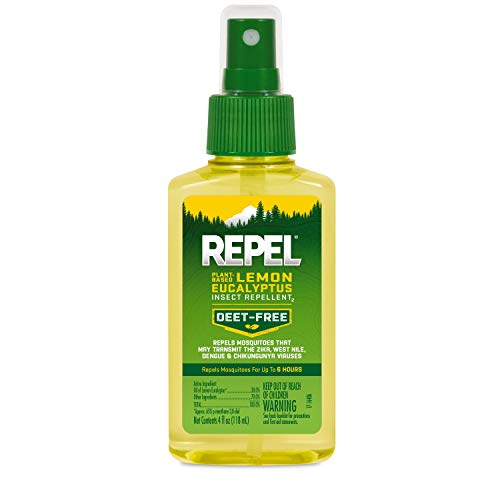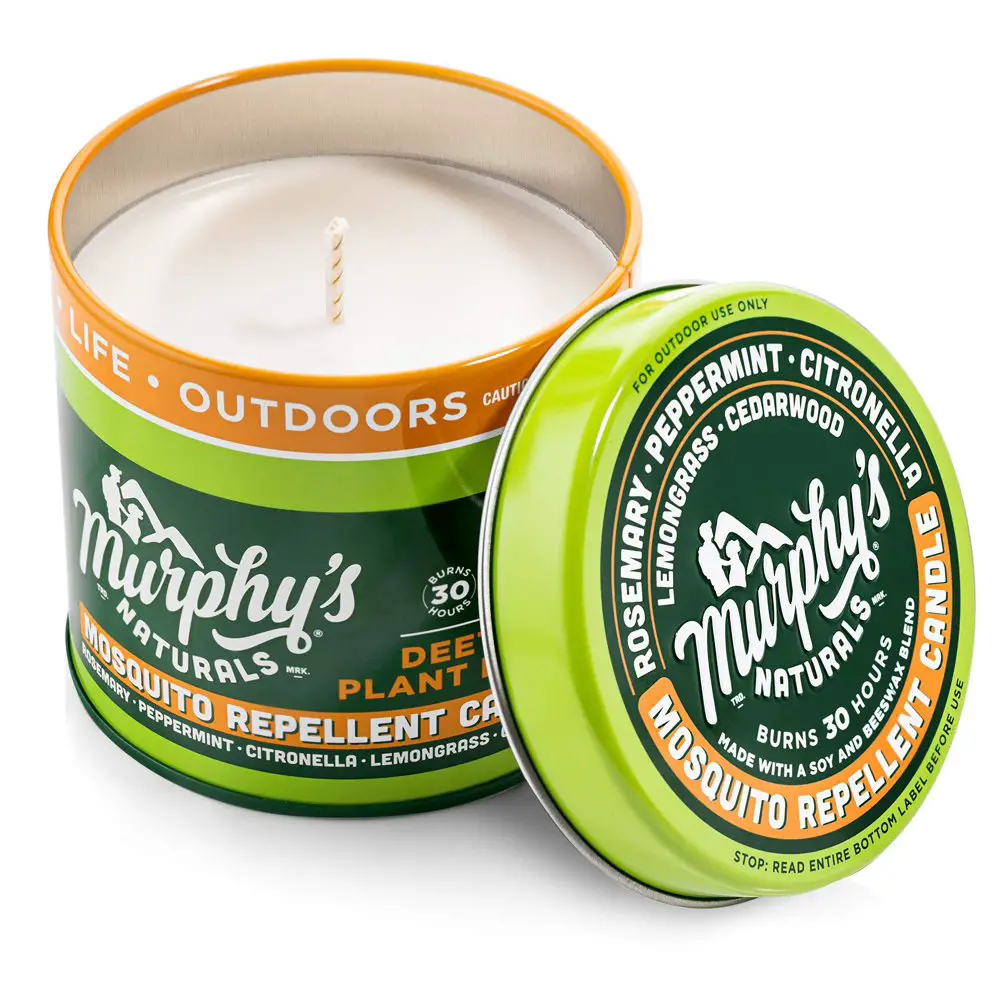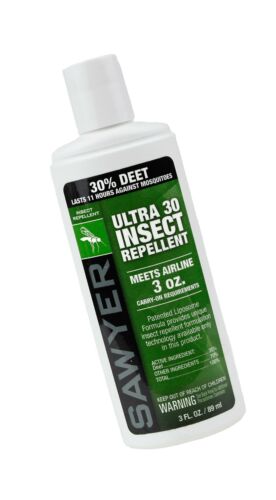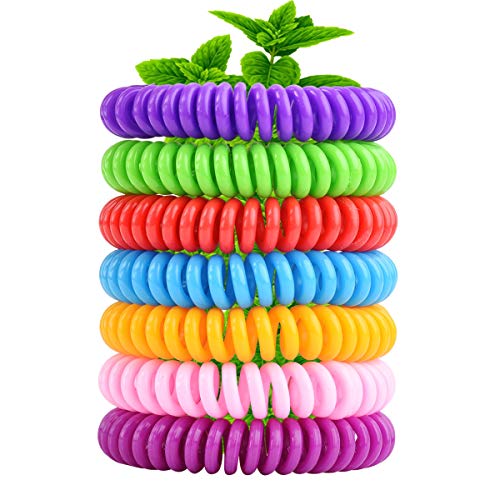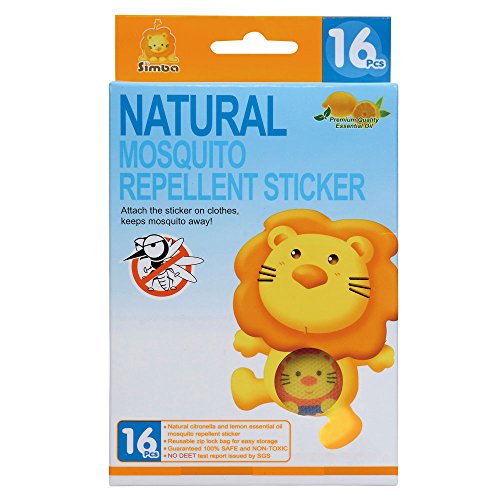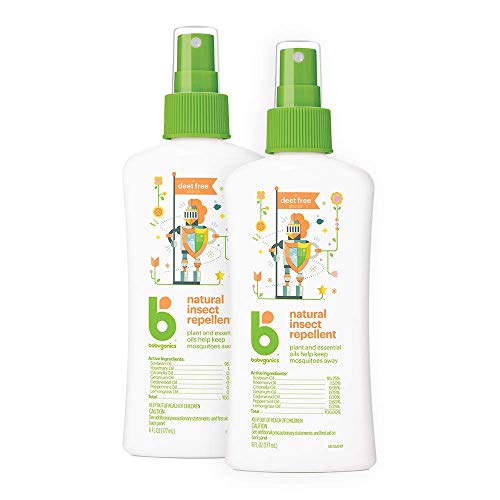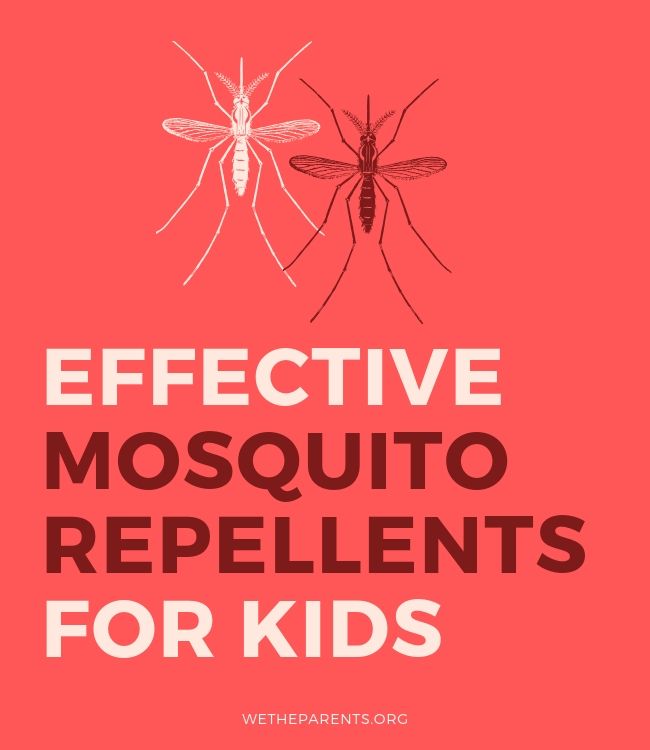Scientists will tell you that this world really belongs to insects and that we’re just sharing it with them. You can soon test that by sending your kids outside in the summer!
Mosquitoes, flies, gnats, chiggers, ticks — there’s no end of biting bugs out there, but fortunately, there’s also a huge variety of repellents.
Whether you want to go for the power of DEET or prefer something more natural, we’ve rounded up what we think are the best mosquito repellents for kids.
In this article:
How old should a child be before using insect repellents?
The Centers for Disease Control recommends two months as the minimum age for applying insect repellent. Before that, babies can be protected by draping them in mosquito netting.
Some repellents, especially those based on stronger essential oils, such as oil of lemon eucalyptus, are not recommended for use on kids under 3 yrs. When in doubt, always read the directions.
Which repellent is best for me and my kid?
The choice of insect repellent can be a very personal one. As anyone who has spent time in a buggy area knows, some people naturally attract biting insects while others receive barely any interest from our pesky friends.
It’s all about your personal scent and body chemistry, and different repellents will interact differently with those factors. Don’t be afraid to experiment until you find what works!
What types of insect repellents are available?
The most common insect repellents on the market fall into one of these classes:
1. Chemical repellents
Whether applied by spray or rubbed on, most chemical repellents use one of three active ingredients.
DEET
This is the best known and, for some time now, the most effective insect repellent, available in many different concentration strengths.
You shouldn’t use a concentration higher than 30% on kids, and a lower concentration (10% – 20%) is more suitable for short play sessions in the backyard. Note that concentrations above 30% aren’t stronger, but just last longer. 1Comparative efficacy of insect repellents against mosquito bites
Also, DEET should not be applied to kids more than once a day. (DEET-containing repellents frequently have that unforgettable bug-spray smell and can feel greasy and sticky on the skin — however, better formulations avoid this problem. Be aware, too, that DEET can melt some plastics, so be careful if your kid has a plastic playset!)
Essential oils
These appeal to parents who prefer natural ingredients, and can include the well-known citronella oil as well as peppermint, cedarwood, lemongrass, and more.
However, essential oils aren’t as strong or as long-lasting as DEET. Only one essential oil, lemon eucalyptus, is actually approved by the Centers for Disease Control as an insect repellent.
Also, be warned that the more floral-scented essential oil compounds may actually end up attracting bees and wasps searching for flowers.
Another class of repellent chemicals, including PMD, IR535, and 2-undecanoate, are synthetic versions of essential oils and other plant-based materials.
While these don’t qualify as organic or natural, they do work like pure essential oils. PMD, a synthetic version of lemon eucalyptus oil, is particularly effective.
Picaridin
This is a relatively new option in the United States, although it’s been used for about a decade in Europe and elsewhere with good results.
Many major US repellent manufacturers are now bringing out picaridin-based formulations for those who distrust DEET.
2. Wearable insect repellents:
Online, you can find a huge choice of bracelets and wristbands that promise to repel insects, usually from being soaked in DEET or essential oils.
These are attractive to parents who don’t want to go through the struggle of slathering their kids with lotions or sprays, as well as those who are concerned about chemical exposure.
The problem here is that these devices are almost all worthless! Having been repeatedly tested and failed, several manufacturers of these devices have been fined for false claims.
Putting a repellent device on just one wrist is not going to protect your kid’s entire body. Save your money. One form of wearable that does work is a belt clip-on device that periodically releases puffs of bug-repellent chemical into the air around the wearer.
Still, this gadget will never be as effective as repellent applied directly to the skin, and is easy for your kid to lose.
3. Ultrasonic mosquito repellers
These devices supposedly drive insects away with high-frequency sounds that are inaudible to humans but unbearable to bugs. In truth, these are an even bigger scam than wristbands.
Any effect they might have is weak and limited, and you probably won’t notice a difference at all. Avoid like — well, like insect-borne diseases!
Is DEET safe for kids?
Many people believe that DEET is a dangerous toxin, possibly due to confusion with the banned pesticide DDT. In reality, DEET has been tested and used, on both kids and adults, since World War II.
Studies have repeatedly shown that DEET is generally safe when applied to the skin. There have been some rare cases of people having a bad reaction to DEET, although these reactions are usually no worse than irritated skin.
As long as DEET is applied as per the instructions, and not inhaled or ingested, it is safe. However, if you’re still concerned, there are numerous non-DEET bug repellent options to choose from.
How do I apply bug repellent to my child?
Always read the instructions first! If your kid will also be wearing sunscreen, put that on first, wait for 15 minutes, then apply the repellent.
Repellent should be applied to clothing and all exposed skin — bugs can, and will, bite through clothes. Do not, however, apply repellent on areas that will be covered by clothing, since this can lead to skin irritation.
If using a spray repellent, apply it in a well-ventilated area so fumes don’t build up. Never spray repellent directly onto your kid’s skin. Instead, spray it onto your hands, then spread it onto exposed skin yourself to ensure a smooth, even application.
Don’t apply repellent around the eyes or mouth, or onto skin with cuts or irritations, and only apply a little around the ears. And never apply repellent to their hands — you’ll know by now how often those hands end up in their mouths!
Try to follow the same pattern each time you apply repellent to your child. If they know what to expect, they’ll become more cooperative.
Resist the temptation to over re-apply repellents. Children will soon let you know when it’s time to re-apply when the bugs start biting again.
The repellents on this list should be good for at least a couple of hours, though that might become less if your kid goes swimming or gets sweaty.
Once your kid is done playing outside, wash the repellent-treated skin with soap and water, and their clothes before re-wearing. And don’t forget to wash your hands, too.
Stay safe when using repellants.
- Never apply a repellent to wounds or irritated skin.
- Don’t spray in closed spaces, like a car.
- Make sure your kid does not breathe in a repellent spray.
- And lastly, avoid using repellent near food.
Editor’s choice
Our opinion
This No Bite Me Cream (check price on Amazon) performs ‘double duty’: it works both as an insect repellent and also soothes itching caused by bug bites if any of them get through the protection.
It’s another all-natural essential oil-based product, (including cedar, mint, thyme, lemongrass, and other oils,) that has no DEET or additives and promises up to 4 to 5 hours of protection per application.
One thing that makes this exceptional when dealing with kids — rather than a spray, it’s a cream applied by hand. Ideal for kids who don’t like the feel or fumes of a spray.
That said, the No Bite Me Cream has an extremely pungent herbal odor, which some kids may object to. However, if you can live with the smell, you’ll find it does a great job of keeping bugs away!
What they’ll love: Easy to apply and no itchiness!
Best repellent with sunscreen
Our opinion
The Avon Skin-So-Soft Bug Guard (check price on Amazon) combines three application substances — a moisturizer, SPF 30 sunscreen, and synthetic (non-DEET) insect repellent — all in a non-greasy lotion.
A great choice in situations where you also want to protect your kid’s skin from sun exposure, since you only have to deal with one application. Skin-So-Soft also smells great and is not particularly strong, an advantage if your kid reacts badly to the more powerful smells of DEET and/or plant oil-based repellents.
However, it doesn’t last as long as some of the other repellents on this list; the manufacturer recommends reapplying every two hours, more often if your kid gets sweaty and/or goes into the water.
This is probably too often to reapply bug repellent, and one reason the CDC doesn’t recommend mixed sunscreen/repellent combos. Still, if you’re planning to limit your bug and sun exposure, Skin-So-Soft can be an easy way to protect your kid against multiple environmental hazards.
What they’ll love: Classic appealing smell in an easily applied lotion
Best budget buy
Our opinion
As noted above, Oil of Lemon Eucalyptus (check price on Amazon) is the only essential oil-based repellent that the CDC recommends. So, if you’re looking for an effective repellent that doesn’t depend on DEET, this is an excellent choice.
The manufacturers promise six hours of protection. However, be careful to apply it properly. Don’t just spritz it on and expect it to work. You must spread it over the entire area you intend to protect while hoping your kid likes the scent of lemon, as this repellent has a very strong smell!
REPEL also has the advantage of being half the price, or less, of most other repellents on this list, so it’s naturally our ‘best budget buy’ for parents who want to balance effectiveness with economy. If your kid isn’t planning to spend long periods of time outside, you’ll still get your money’s worth.
What they’ll love: Great (if powerful) smell and non-sticky application.
Watch out for: Like many essential oil-based repellents, this may not be able to handle heavily buggy areas.
Best repellent candle
Our opinion
On their own, Murphy’s Naturals Mosquito Repellent Candles (check price on Walmart) don’t offer the best bug protection, especially if your kid tends to roam around (and outside the range of the candle). However, they’re still useful as a supplement to other forms of repellent while keeping your kids extra safe and can work well briefly while outdoors.
Of those we’ve tried, we chose Murphy’s Naturals as our ‘best repellent candle’. It’s made of all-natural soy and beeswax. Its bug-repelling power comes from a 5% concentration of various plant-based oils, such as peppermint, rosemary, and citronella.
The candle’s effective area is about 10′ x 10′, so you may need more than one if you have a larger yard. However, each candle offers around 30 hours of burning time, so you should more than get your money’s worth.
Murphy’s also makes incense sticks and tea-light candles with the same formulation. While they don’t last as long as the big candle, they can be useful to screen a larger area with bug-repellent odors.
What they’ll love: Easy to use and smells great.
Watch out for: It’s a burning object near your kid, so be sure to supervise.
Our fifth choice
Our opinion
Okay, the bugs are thick and biting hard and possibly carrying off small housepets, and you have no time to waste faffing around with essential oils. You want the heavy artillery, and this is it.
The Sawyer Ultra 30 Insect Repellent (check price on Ebay) includes a 30% concentration of DEET in a time-release formulation that offers up to 11 hours of bug protection. Even better, the lotion is odorless, so no bug spray stink for your kid to complain about.
It’s also non-greasy and works when applied along with sunscreen. Our testing has also found that this is the best sweat proof repellent on the list. If it’s hot, or you’re planning to go into water, using this repellent will minimize the amount of times you need to reapply.
It won’t be necessary if you’re just sending your kid out to play for a little while, but if camping, fishing, or going on a nature walk, the Ultra 30 Repellent can be a real skin saver for you and your child.
What they’ll love: If this doesn’t keep the bugs away, nothing will.
Watch out for: This is a strong concentration. While it shouldn’t cause skin irritation, be careful while applying.
Best sweat proof
Our opinion
Another essential oil-based repellent for those who prefer to avoid DEET, Sky Organics Organic Bug Spray (check price on Amazon) is advertised as vegan and cruelty-free.
It includes no alcohol or other additives, just organically derived essential oils including citronella, lemongrass, peppermint, lavender, sandalwood, and others. If the purity of what you apply to your kid’s skin is important to you, this is worth a look.
Unlike many other essential oil-based repellents, Sky Organics’s spray has actual lasting power. The manufacturer promises four hours of protection time, enough to keep your kid safe for a nice long outdoor play session.
What they’ll love: Safe, effective, and sweet-smelling!
Watch out for: This product doesn’t have as strong a protective “aura” as some other sprays, so be careful not to miss a spot when applying. Spreading it with your fingers works well.
Best for travel
Our opinion
Another essential oil-based repellent for those who prefer to avoid DEET. Sky Organics Clip-On Mosquito Repellent (check price on Amazon) is an alternative to skin-applied protection.
Instead of spraying yourself, this device uses a battery-powered fan to fill the air around you with repellent. It’s small and lightweight enough to clip onto your kid’s waistband or belt and forget about it.
The major drawback with this device is that whenever your kid moves they’ll leave the protected area, then it’ll take a few minutes for the Clip-On to fog the new area.
Clearly, this is best suited for situations where your kid doesn’t move around much, such as eating dinner outside or playing in a sandbox. The Clip-On uses a chemical called metofluthrin, which repels mosquitoes, but will not be very effective against ticks or other hungry bugs.
It does offer 12 hours of mosquito protection per refill disk. Since it doesn’t use liquid repellent, we also call this our Best for Travel, since you won’t have to worry about getting tripped up by airport security’s 3-ounces-of-liquid rule.
What they’ll love: No smell, no unpleasant application to the skin, and no ‘wash up’ afterward.
Watch out for: Easy for kids, especially smaller ones, to lose and/or break.
Best DEET-free
Our opinion
These cute Simba Repellent Stickers (check price on Amazon) are infused with lemon and citronella essential oils to keep the bugs at bay. They’re not meant to be applied directly to the skin, but can be attached to kids’ clothing.
This makes them an excellent choice for protecting babies who are too young for skin-applied repellents as they can be placed on sun hats, shirts, or pants for protection.
That said, like many other alternative repellents on this list, these stickers just aren’t as good as skin-based repellents unless you have enough to completely cover your kid in stickers!
Of course, you’ll have to watch out for curious kids peeling them off (we suggest you put them on the back where they can’t be seen!) We still consider this the best DEET-free alternative on this list because they’re a fun and easy way to keep your kid bug-safe.
If your kid has chemical sensitivity, these stickers offer a way to keep them bug-safe without putting their health at risk.
What they’ll love: A fun sticker that also helps protect against bug bites!
Watch out for: Don’t expect one sticker to be enough to protect the kid completely. Two or three at a time is more reasonable.
Best for babies
Our opinion
The Babyganics Natural (check price on Amazon) is another item in our all-organic, DEET-free essential oil repellent category. This one includes peppermint, citronella, lemongrass, rosemary, and other oils.
As the name suggests, this is marketed for babies and smaller kids and should be especially gentle on sensitive skin. Its oily base enables it to spread easily, so a little can go a long way.
The manufacturer also produces insect repellent wipes, which will make your life easier if your baby won’t sit still for a spray, and also makes total coverage simpler.
The recommended reapplication rate is every two hours, so is less enduring than some of the products on this list, though still decent for an essential oil formulation.
We’ve selected this as our ‘best for babies’ (over two months, remember!) because it balances ease of application and skin safety with repellent power.
What they’ll love: A simple, effective bug repellent that even the smallest can enjoy.
Watch out for: This is another strong-scented product. While it isn’t bad (mostly citronella-lemon smell), it can take some getting used to.
And the winner is…
While all these repellents have their pros and cons, and one of them might be just right for your kid, SallyeAnder’s No Bite Me Cream (check price on Amazon) is our ‘editor’s choice’.
It’s easy to use, feels great on the skin, lasts a long time, and works well to repel bugs of all types and soothe itches whenever they manage to sneak through. And it’s all-natural!


